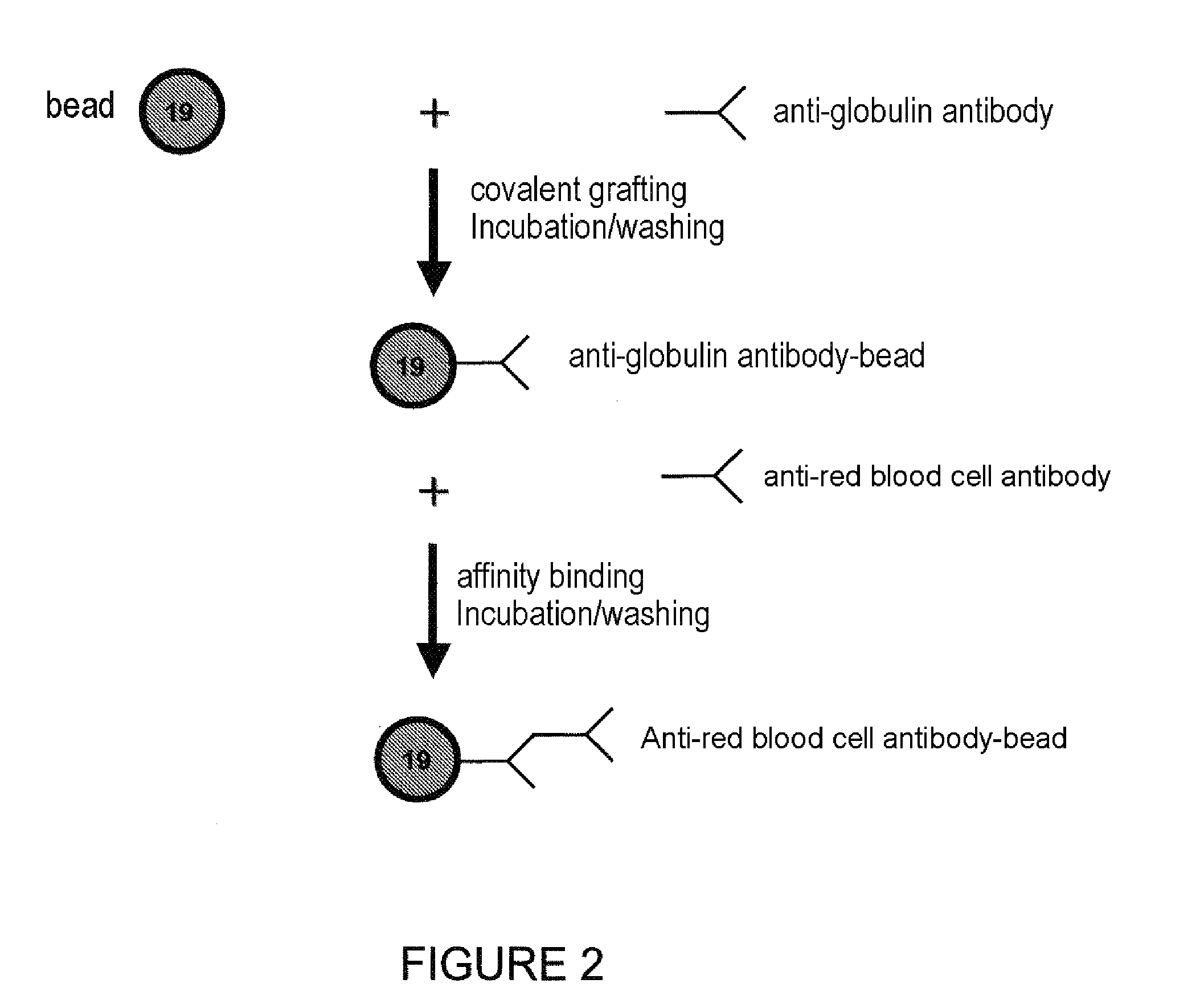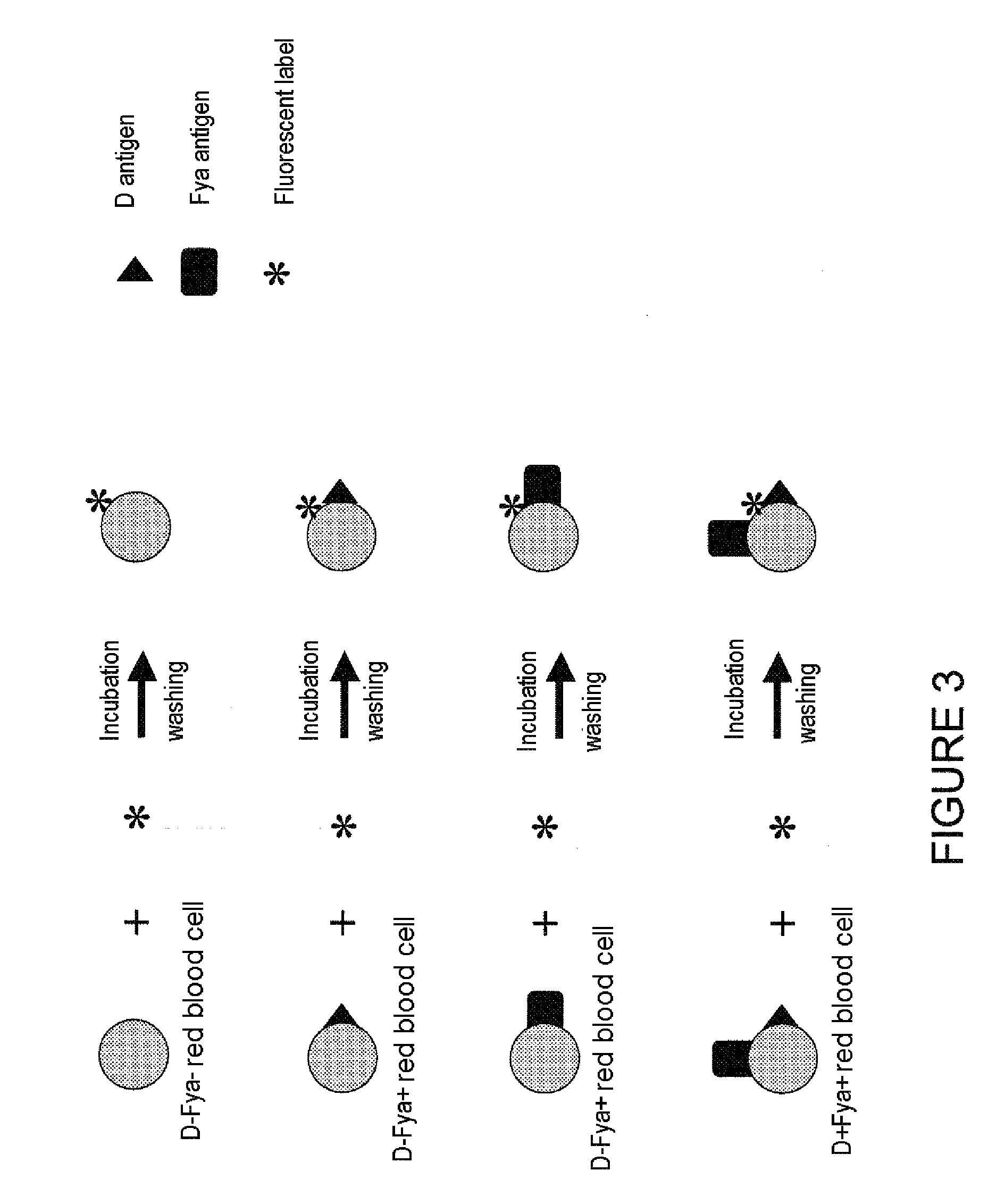Detection of Antigens Carried by Erythrocytes and of Anti-Erthrocyte Antibodies
a technology of erythrocytes and antibodies, applied in the field of detection of antigens carried by erythrocytes and antierthrocyte antibodies, can solve the problems of antigenic determinants, but still significant in terms of transfusion risk
- Summary
- Abstract
- Description
- Claims
- Application Information
AI Technical Summary
Benefits of technology
Problems solved by technology
Method used
Image
Examples
example 1
Antigen Identification
[0067]The objective of this analysis is to identify, by means of specific monoclonal antibodies, antigens that are present at the surface of red blood cells from donors or from patients. Fluorescent beads are used to immobilize the anti-red blood cell antibodies. Antibodies of different antigenic specificities can thus be bound to various regions of beads that have different colours.
[0068]As for the red blood corpuscles, they are labelled with a fluorescent compound compatible with the wavelengths of the reporter laser of the apparatus sold under the name “Bioplex 200” by the company Bio-Rad.
[0069]After labelling, the red blood cells are incubated with the sensitized beads. It is thus possible to detect the red blood cells attached to the beads and thus to determine their antigenic specificities.
1.1—Material and reagents
Beads:
[0070]The beads used are manufactured by Luminex (Luminex Corp., Austin Tex., United States). They are superparamagnetic beads 8 μm in di...
example 2
Detection of Phosphatidylserine, a Marker of Erythrocyte Ageing
[0130]The demonstration of markers of erythrocyte ageing is of value in studying red blood cell populations in blood transfusion (Cardo L J et al Transfus Apher Sci, 2008 April; 38(2): 141-7) but also in studying the phenomena involved in certain blood pathologies such as thalassaemia (Basu S et al Br J Haematol, 2008 April; 141(1): 92-9). Erythrocyte ageing is reflected in particular by the appearance of a structure called phosphatidylserine (PS) at the surface of the erythrocytes.
[0131]The test of the invention can be readily implemented for detecting this molecule at the surface of red blood cells.
[0132]For this, fluorescent beads are used to immobilize the red blood cells to be tested, via poly-L-lysine (PLL).
[0133]These beads are then brought into contact with an anti-phosphatidylserine antibody in an incubation phase.
[0134]After a washing step, the binding of the anti-phosphatidylserine to the red blood cell is det...
PUM
| Property | Measurement | Unit |
|---|---|---|
| sizes | aaaaa | aaaaa |
| sizes | aaaaa | aaaaa |
| sizes | aaaaa | aaaaa |
Abstract
Description
Claims
Application Information
 Login to View More
Login to View More - R&D
- Intellectual Property
- Life Sciences
- Materials
- Tech Scout
- Unparalleled Data Quality
- Higher Quality Content
- 60% Fewer Hallucinations
Browse by: Latest US Patents, China's latest patents, Technical Efficacy Thesaurus, Application Domain, Technology Topic, Popular Technical Reports.
© 2025 PatSnap. All rights reserved.Legal|Privacy policy|Modern Slavery Act Transparency Statement|Sitemap|About US| Contact US: help@patsnap.com



